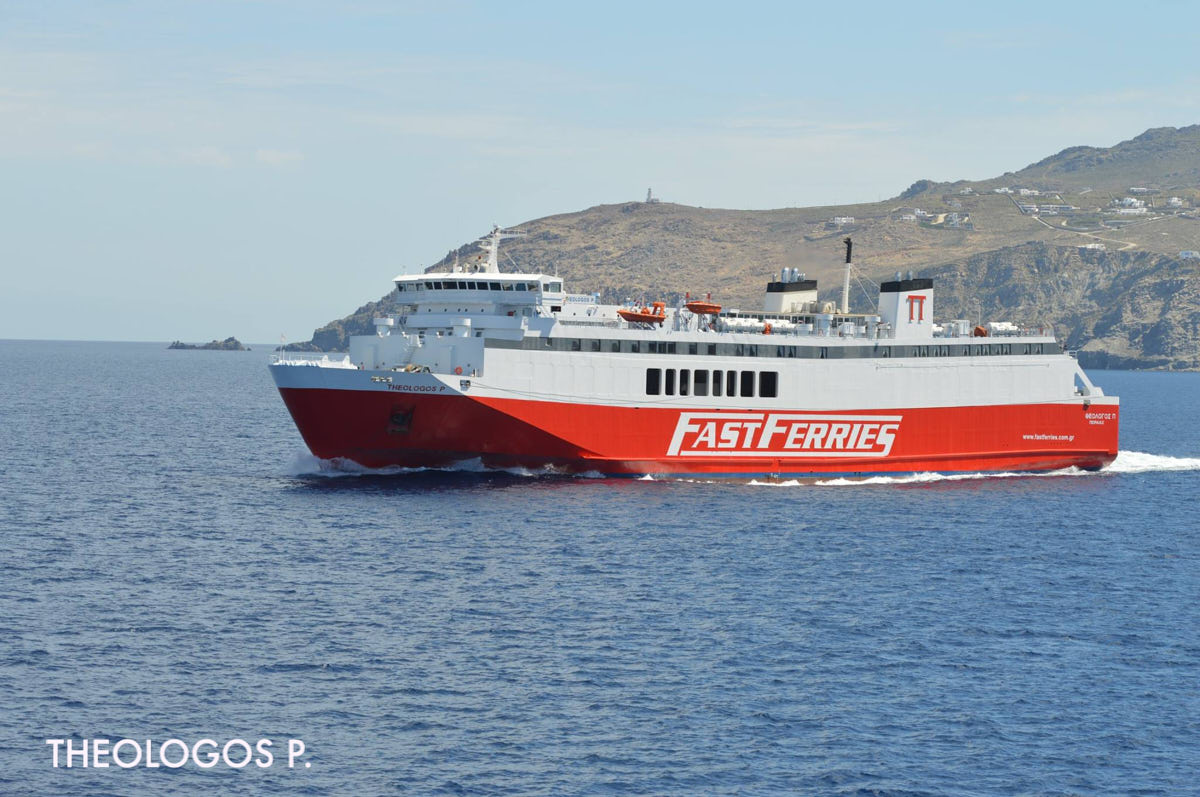You are one of the last and very important traditional Greek Ferry Operators. Can you tell us a few things about the past and the future of your company?
Fast Ferries is a traditional Greek-owned Ferry Operator (Panagiotakis family), which was founded in the 80s with landing ferries and served the Corfu – Igoumenitsa and Kavalla – Thasos routes. Panagiotakis family is also operating -till today- the “Megalochari tugs” as well as a small shipyard at Salamina (an island close to Attica prefecture, near Perama), which offers a variety of shipping services such as new constructions, repairing and dry-docking for vessels up to 90 metres long.
In 2007, Fast Ferries started a new operation on the Rafina-Andros-Tinos-Mykonos line introducing the large RoPax Ferry THEOLOGOS P. (7.326gt/2000). One of the newest and most modern ferries of the line, which was fully rebuilt in 2006.
That business venture was so successful that FAST FERRIES decided –in 2012- to leave the Corfu – Igoumenitsa route and transfer all its operations, including its second vessel EKATERINI P. (3.948gt/1990), to the Rafina-Cyclades route.
In 2015, despite the economic crisis FAST FERRIES decided to further invest on the line and add a third vessel to its fleet, the Japanese built FAST FERRIES ANDROS (7.786gt/1989). She underwent a large-scale refurbishment in her interior and machinery, added stabilizers and was introduced on the same route in August 2015.
At the same time, we have opened the Rafina-Tinos-Mykonos-Naxos line introducing the upgraded EKATERINI P., which was also a complete success.
In 2019 and before the Covid-19 struck we dared to purchase the HSC THUNDER. A very modern high-speed craft that we intended to introduce within the Hellenic Coastal Shipping. However, the Covid-19 developments have overtaken us and today we are making our future plans very carefully.
In any case, we strongly believe that the best way to promote our company’s development is to make small and well estimated steps, avoiding as much as we can a possible high-risk bank exposure. However, the current financial situation does not allow us to take a high risk at least until the crisis is over. We prefer to have a very good knowledge of the market as well as the passengers and sea transportation needs and offer high quality vessels and services.





